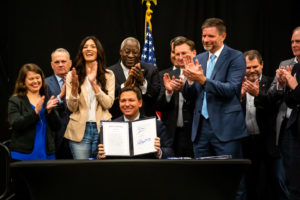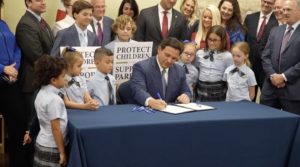Parents should know what their kids are learning at school
(The Daily Signal) – Does anything compare with having the peace of mind of knowing that your child is safe, happy, and learning during the school day?
While a parent is working, knowing that…

(The Daily Signal) – Does anything compare with having the peace of mind of knowing that your child is safe, happy, and learning during the school day?
While a parent is working, knowing that your child is getting the care and attention he or she needs while apart from the family is invaluable.
Many early-childhood education and care providers in the private sector have recognized that and have adopted apps that enable mothers and fathers to see what their child is doing.
As working mothers ourselves, this window into the school day is welcome comfort. Throughout the day, an awaited “ding” from a cellphone heralds a picture on the playground or in a reading circle, showcases children engaged in art projects, and allows a parent snippets into their child’s emotional well-being.
As much as seeing a cute photo pop up brings joy during the workday, parents are also alerted to meals eaten (or vegetables rejected, more typically), time napping, and even bathroom breaks.
These readouts aren’t only the domain of child care providers and preschools. They are also increasingly provided to parents sending their children off to camp.
Overnight camps provide parents with websites and apps that regularly update photo galleries with their child conveniently tagged in pictures featuring camp activities. Parents missing their child or curious about his or her daily schedule can access a steady stream of photos and videos from camp assemblies, games, classes, and meals.
For parents worried about their child’s state of mind, each picture can be scrutinized—and possibly overanalyzed.
While some parents still mail letters and encourage their children to write home the old-fashioned way, the camp portals also provide an opportunity to compose and send daily (or more) messages that are printed out and handed to the child.
Although plenty of parents may be content to take a break from day-to-day monitoring of their children’s activities, others opt in to receive frequent newsletters and “microposts” from the camp.
Some families may not want to send their child to a provider or experience that collects and sends near-real-time information on their child’s day via technology. To be sure, there are many schools that have eschewed that approach. And as technology advances, data privacy and security have to be as much a part of the future as the apps themselves.
But our experience with schools and camps sending information to us throughout the day on our children’s well-being has us wondering: What’s with the K-12 public education system?
For families of elementary and secondary school-age children, the amount of insight into your student’s day is a 180-degree different experience. Public K-12 schools are a near black box, providing little transparency to families. Too often, parents have to appeal to district leaders and school boards, or even resort to lawsuits, just to get information about the curriculum used in their child’s school.
Parents who have simply asked to have K-12 lesson plans posted online are accused of trying to “excessively scrutinize” school content.
The ACLU claims curriculum-transparency bills are “thinly veiled attempts at chilling teachers and students from learning and talking about race and gender in schools.” PEN America argues parents demanding transparency are just looking for “things to be mad about.”
Setting aside for a moment the fact that those parents are taxpayers whose hard-earned money pays for the content in school districts, only in the K-12 public education setting are such requests for transparency deemed “excessive.” Most college professors post their syllabi online, and students receive a list of required textbooks to buy ahead of the semester, giving them insight into the general parameters of a course’s content.
Many K-12 schools have adopted learning management systems, such as Schoology, Google Classroom, and Canvas, or apps such as Remind or ClassDojo, that facilitate parent-school communication. But as a general matter, districts have resisted providing robust curriculum transparency to families.
K-12 students spend an average of 6.6 hours in school each day for 13 years. While we’re not suggesting schools provide detailed readouts of how your high-school sophomore is spending his time during class or pictures from the school cafeteria, parents should at least know whether their seventh grader is being assigned, say, “Gender Queer.”
State leaders around the country agree, and more than a dozen have moved forward with transparency bills. Of the 19 states that have recently adopted parental bills of rights, most include transparency language.
For example, Florida’s new curriculum transparency law requires schools to allow parents to see all library books and classroom book lists, along with any related instructional materials.
Parental involvement leads to better student outcomes. Education experts regularly parrot this well-documented fundamental truth, but too often keep parents in the dark about what schools are teaching children.
It’s time for the K-12 education system to join early-childhood education providers and summer camps and fully involve parents in children’s education.



